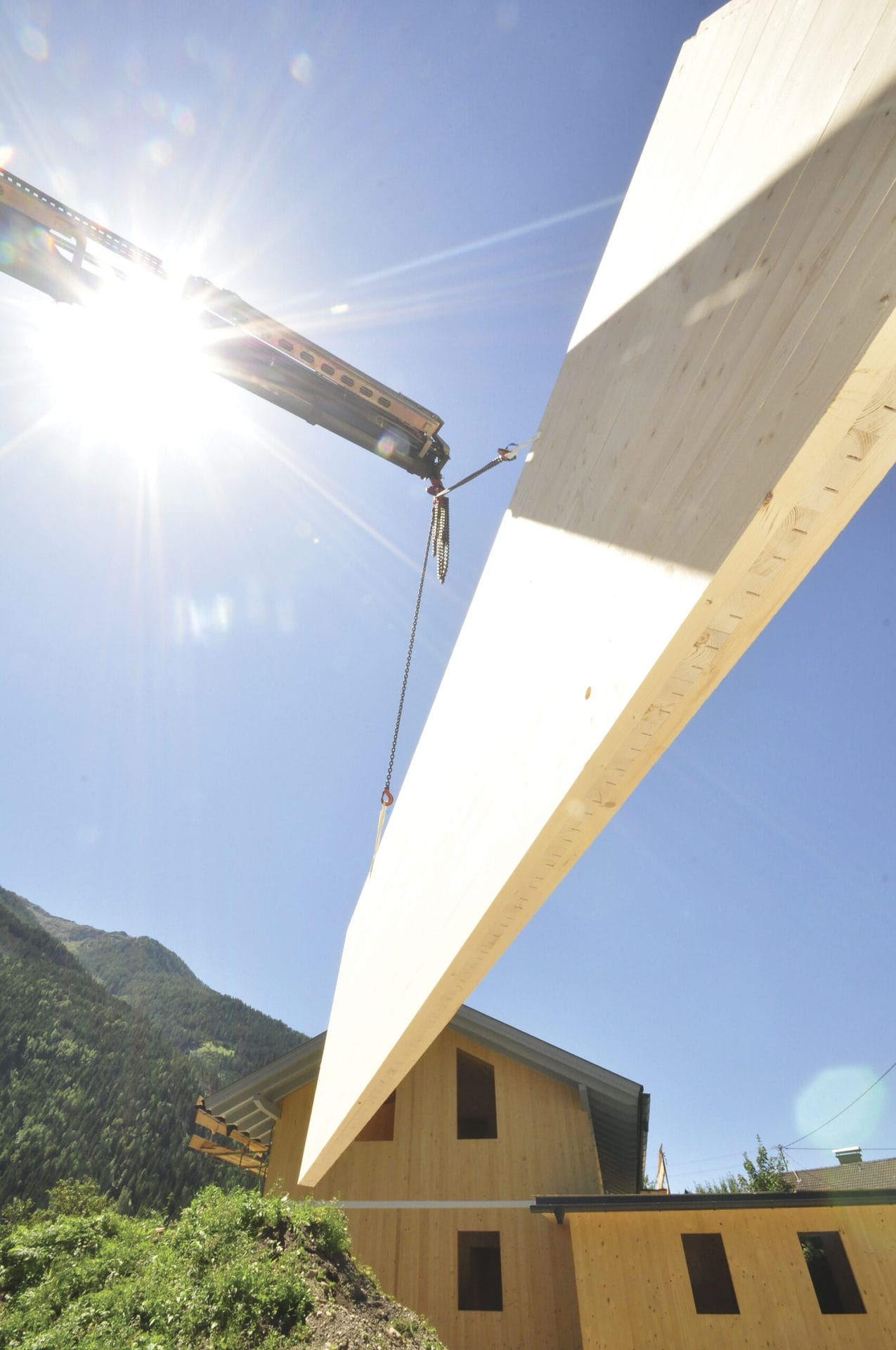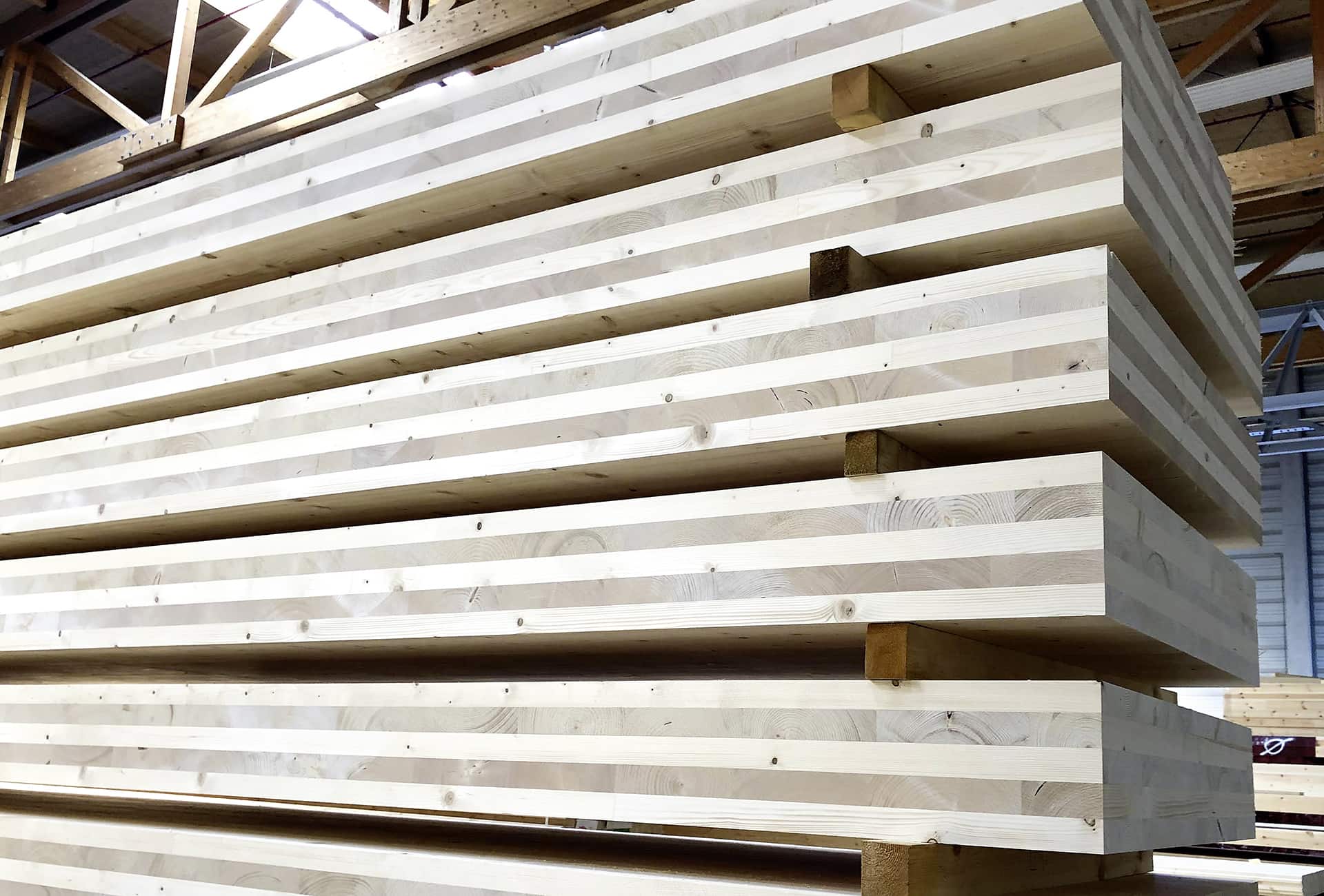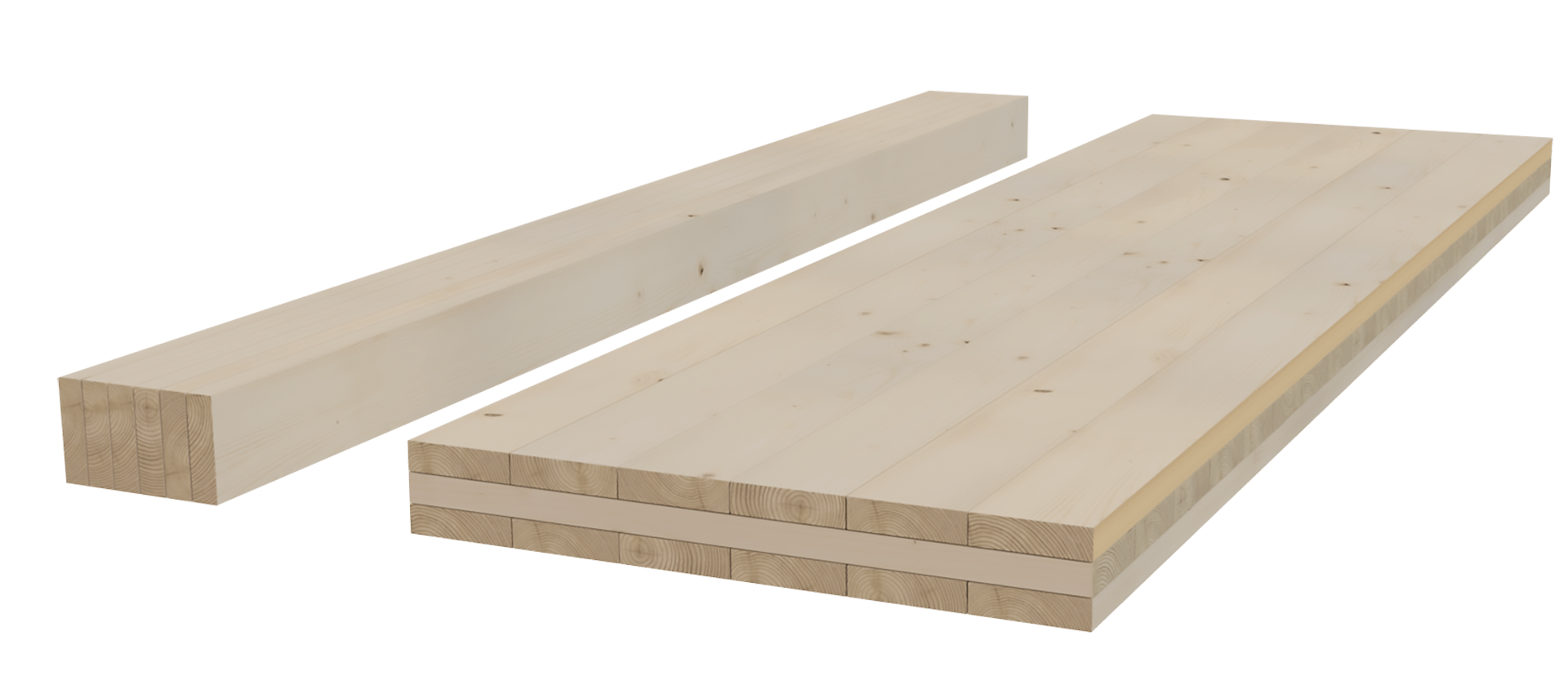
What is the difference between CLT and glulam?
A product with multiple purposes
CLT, short for cross-laminated timber, and glulam (or GLT), an abbreviation for glue-laminated timber, are both constructed from timber lamellas, also known as lamstock, bonded together with adhesive.
These materials, referred to as laminated timber, mass timber products or engineered timber, serve multiple purposes but differ in their applications within a building.
CLT is used for walls, floors, and floor separation. Glulam is primarily used for the loadbearing frame in a building such as beams, or columns.
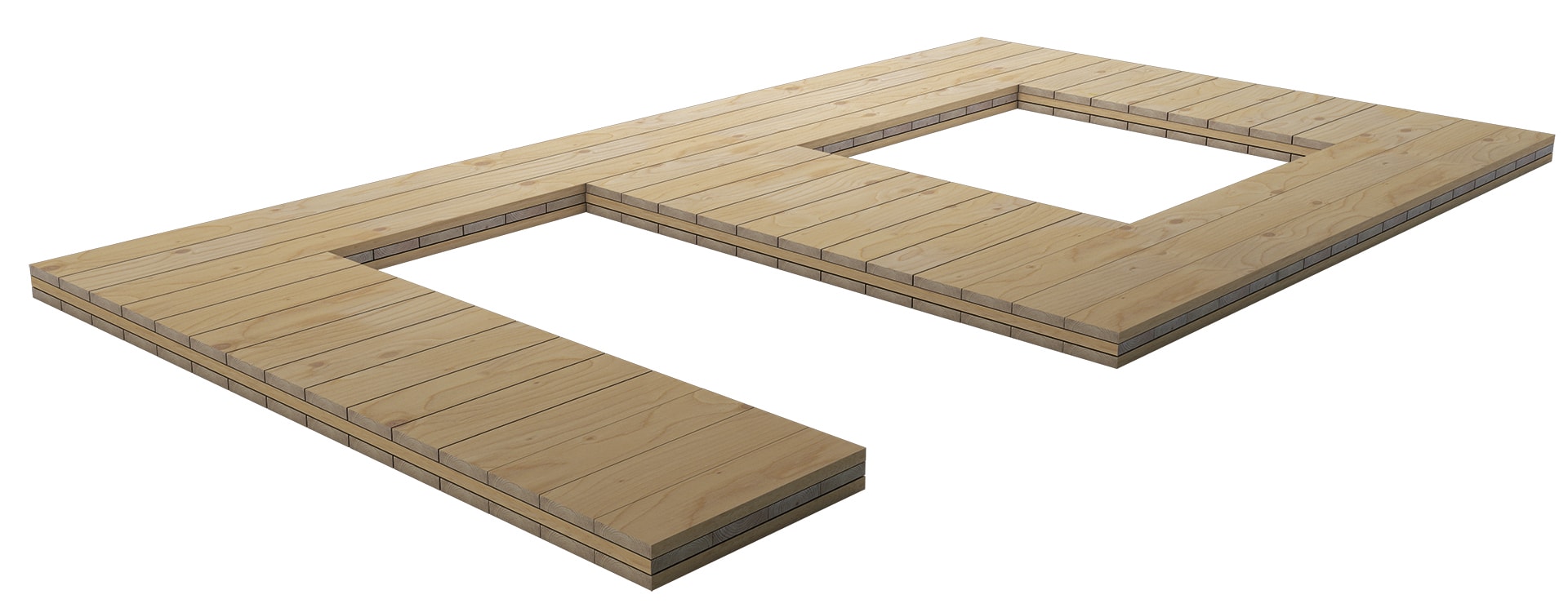
CLT
CLT is made by cross laminating several layers perpendicular to each other. A single CLT panel can make up an entire wall section, or several smaller panels can be combined to form the wall.
Further details on CLT manufacturing solutions can be found here, and examples of a press solution for whole CLT panels are available here.
Additionally, our Combi press provides a solution for pressing both CLT and glulam.
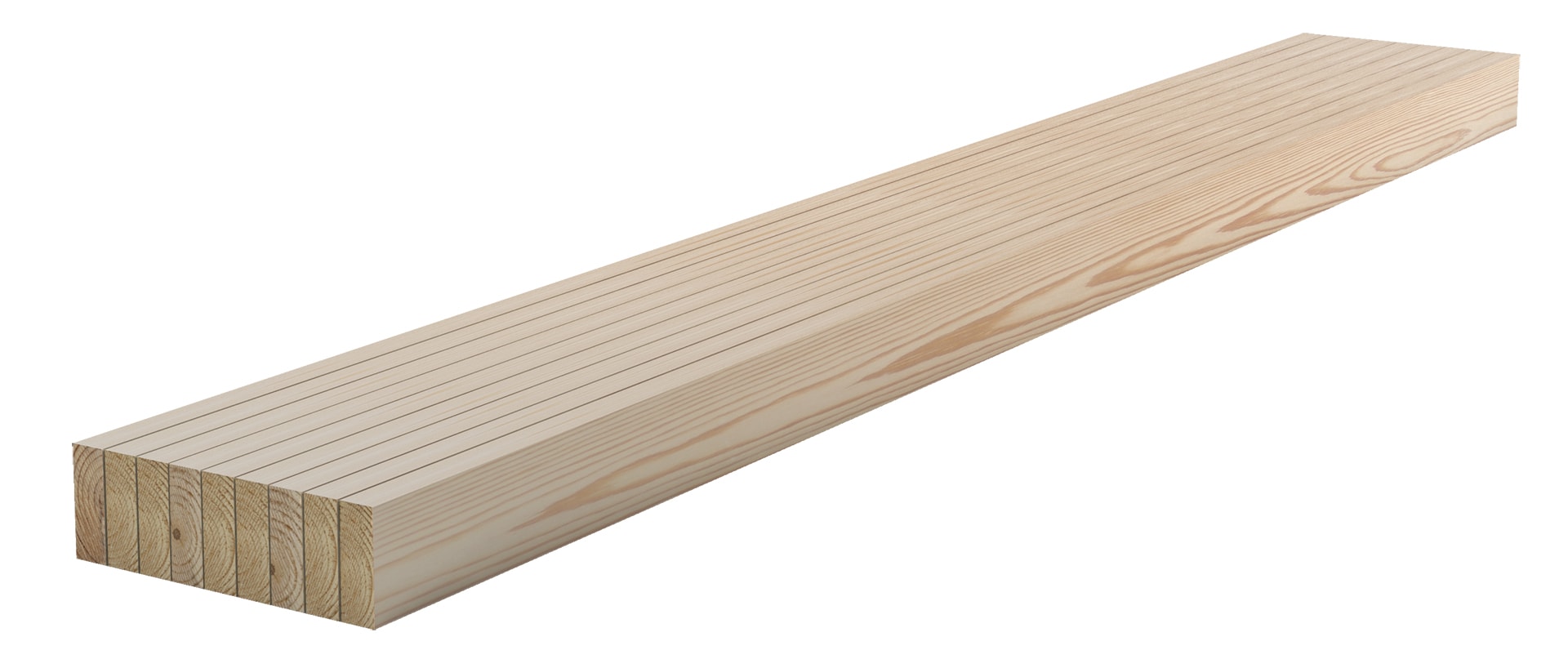
Glulam/GLT
Glulam is made of lamellas that are glued and then pressed together. You can read more about glulam and the way they are made.
Our Kallesoe press is capable of producing various types of glulam beams, depending on project requirements. Smaller glulam beams suitable for construction or framing purposes can be manufactured using solutions like these, while presses for longer and thicker glulam beams are available here.
If you’re interested in learning more about a tailored system solution to meet your production and product requirements, don’t hesitate to contact us.

